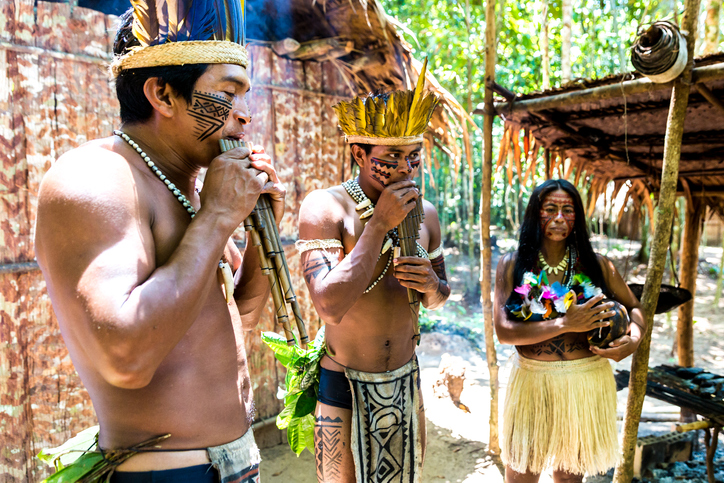
The coronavirus (COVID-19) pandemic poses a grave health threat to Indigenous peoples around the world. Indigenous communities already experience poor access to healthcare, significantly higher rates of communicable and non-communicable diseases, lack of access to essential services, sanitation, and other key preventive measures, such as clean water, soap, disinfectant, etc. Likewise, most nearby local medical facilities, if and when there are any, are often under-equipped and under-staffed. Even when Indigenous peoples are able to access healthcare services, they can face stigma and discrimination. A key factor is to ensure these services and facilities are provided in indigenous languages, and as appropriate to the specific situation of Indigenous peoples.
Indigenous peoples’ traditional lifestyles are a source of their resiliency, and can also pose a threat at this time in preventing the spread of the virus. For example, most indigenous communities regularly organize large traditional gatherings to mark special events e.g. harvests, coming of age ceremonies, etc. Some indigenous communities also live in multi-generational housing, which puts Indigenous peoples and their families, especially the Elders, at risk.
As the number of COVID-19 infections rises worldwide, as well as the high mortality rates among certain vulnerable groups with underlying health conditions, data on the rate of infection in Indigenous peoples are either not yet available (even where reporting and testing are available), or not recorded by ethnicity. Relevant information about infectious diseases and preventive measures is also not available in indigenous languages.
Indigenous peoples experience a high degree of socio-economic marginalization and are at disproportionate risk in public health emergencies, becoming even more vulnerable during this global pandemic, owing to factors such as their lack of access to effective monitoring and early-warning systems, and adequate health and social services.
As lockdowns continue in numerous countries, with no timeline in sight, Indigenous peoples who already face food insecurity, as a result of the loss of their traditional lands and territories, confront even graver challenges in access to food. With the loss of their traditional livelihoods, which are often land-based, many Indigenous peoples who work in traditional occupations and subsistence economies or in the informal sector will be adversely affected by the pandemic. The situation of indigenous women, who are often the main providers of food and nutrition to their families, is even graver.
Yet, Indigenous peoples are seeking their own solutions to this pandemic. They are taking action, and using traditional knowledge and practices such as voluntary isolation, and sealing off their territories, as well as preventive measures – in their own languages.
If you would like to share how your community is working to prevent and fight against the spread of COVID-19, please send us an email at [email protected] This information can help other indigenous communities be better prepared to deal with the pandemic. #WeAreIndigenous





